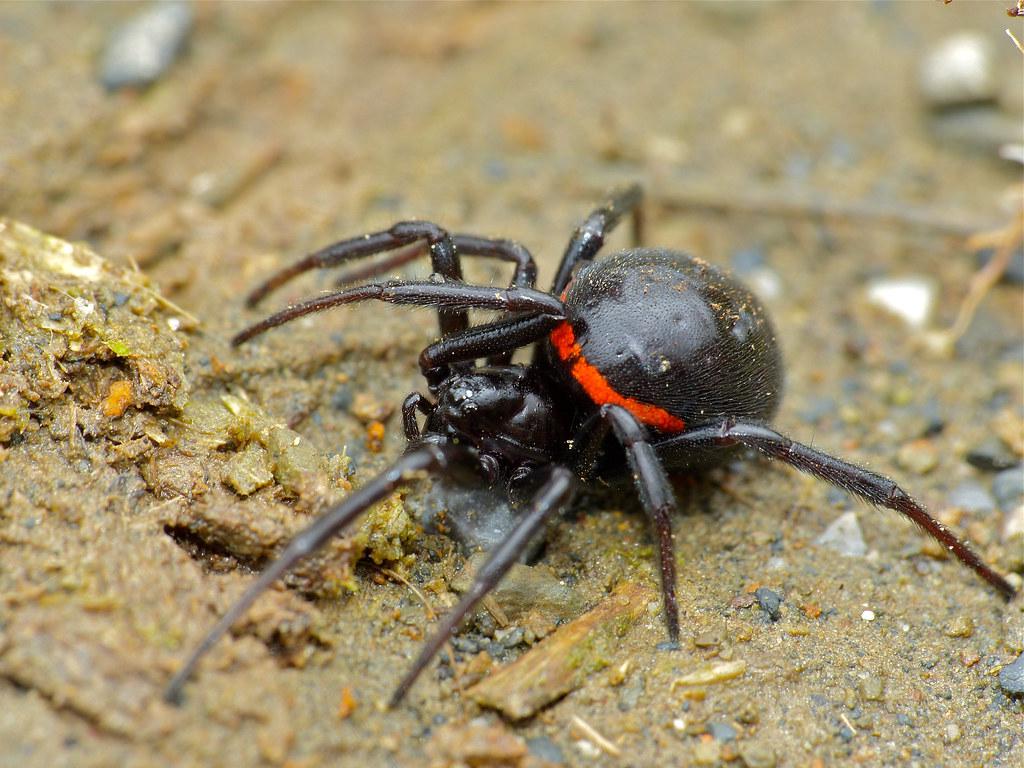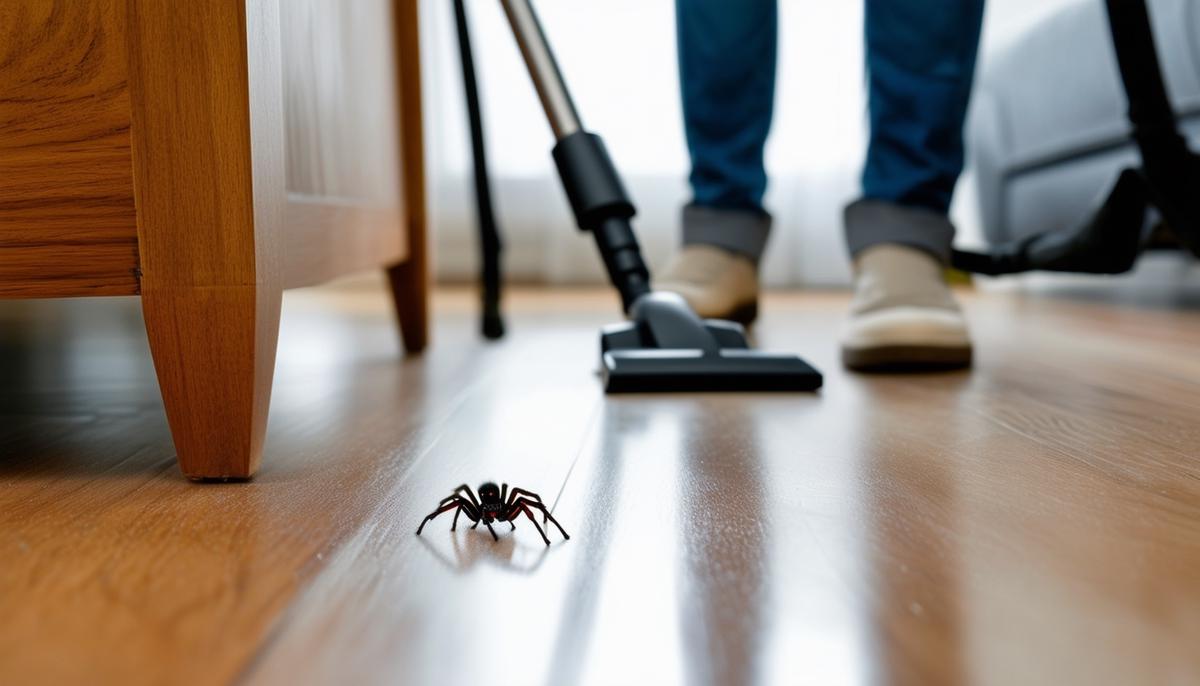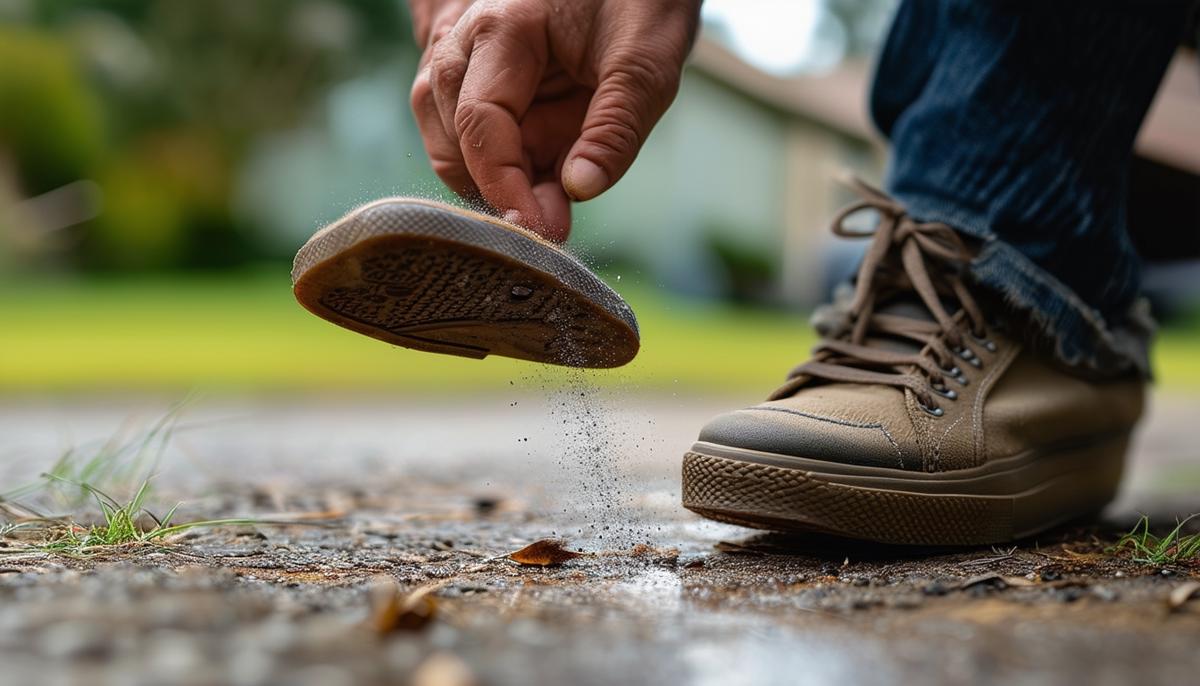Identifying False Widow Spiders
Identifying false widow spiders involves focusing on a few key features that distinguish them from other spiders. Look for the iconic skull-like patterns on the abdomen, a shiny, globe-shaped body, and their distinctive webs, which are usually spun a little higher than eye level and feature a rough, tangle-like architecture.
False widows prefer secluded spots away from too much foot traffic or human interaction, such as:
- Undisturbed plant foliage
- Crevices inside garages or sheds
During the mating season in autumn, male false widows may wander more, so increase your vigilance for them. Remember, while they may appear brooding, false widows are not aggressive and bites typically occur accidentally.1
To avoid mistaking other spiders for false widows, check for the conspicuous skull pattern on their back and their webbed artistry within leaping range of doorways or above-ground hiding spots. Recognizing the distinguishing features of false widows can help maintain a peaceful coexistence with these often misunderstood creatures.

Handling False Widow Infestations
Managing false widow infestations involves a gentle approach that focuses on maintaining a clean environment and using natural deterrents. Regular vacuuming of corners, behind furniture, and in rarely disturbed areas makes your dwelling less appealing to spiders. Use the vacuum to remove cobwebs and egg sacs, and wipe surfaces where web formation begins.
Natural deterrents such as peppermint, tea tree, or citrus oils can help keep spiders away. Mix a few drops of these essential oils in water and spray along window ledges and nooks, both inside and outside your home. Install fine meshes at air vents or windows to prevent spiders from entering while still allowing fresh air to circulate.
In outdoor areas like garden sheds, organize wood and tools to minimize potential spider habitats. Ensuring smaller wilderness zones away from main living areas can help redirect false widows to more suitable residences.
By adopting these eco-friendly methods and maintaining a consistent cleaning routine, you can effectively manage false widow populations without resorting to harmful chemicals, promoting a balanced coexistence with these arachnids.2

Preventing False Widow Bites
To prevent false widow bites, it's important to understand their seasonal habits and take simple precautions. During autumn, when male false widows are more active in their search for mates, be extra vigilant. Regularly check garments left on the floor or in storage areas to avoid accidentally disturbing a resting spider.
Be mindful that false widows may seek shelter in items left outdoors, such as:
- Towels draped over patio chairs
- Gardening gloves in sheds
Develop a habit of shaking out shoes, coats, and other clothing before use to minimize the risk of bite incidents.
In areas with increased insect activity, which can attract spiders, maintain cleanliness to reduce the appeal for both insects and spiders. Empty open garbage containers regularly, ensure window and door screens are intact, and minimize exterior lighting that may draw in insects.
Educate household members, especially children, about spider safety through fun activities or bedtime routines. This helps foster awareness and prevention without causing undue fear.
For pet owners, keep pet beds clean and routinely inspected. Monitor less trafficked pet-friendly areas for web accumulation or spider activity to protect curious pets from startled spider bites.3
By adopting these preventive measures and promoting a respectful coexistence with false widows, we can minimize the risk of bites while maintaining a balanced ecosystem in and around our homes.

- Stuber M, Nentwig W. How informative are case studies of spider bites in the medical literature? Toxicon. 2016;114:40-44.
- Vetter RS, Isbister GK. Medical aspects of spider bites. Annu Rev Entomol. 2008;53:409-429.
- Dunbar JP, Afoullouss S, Sulpice R, Dugon MM. Envenomation by the noble false widow spider Steatoda nobilis (Thorell, 1875) – five new cases of steatodism from Ireland and Great Britain. Clin Toxicol (Phila). 2018;56(6):433-435.
Leave a Reply